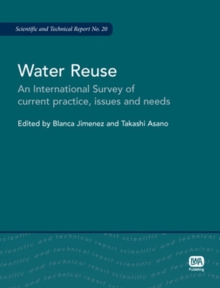
Mechanism and Design of Sequencing Batch Reactors for Nutrient Removal PDF
by Derin Orhon, Ozlem Karahan, G. E. Zengin, Oliver Olsson, Melanie Bauer, Organisation for Economic Co-Operation and Development (OECD)
Part of the Scientific and Technical Report Series series
Description
The sequencing batch reactor (SBR) is perhaps the most promising and viable of the proposed activated sludge modifications today for the removal of organic carbon and nutrients.
In a relatively short period, it has become increasingly popular for the treatment of domestic and industrial wastewaters, as an effective biological treatment system due to its simplicity and flexibility of operation.
Mechanism and Design of Sequencing Batch Reactors for Nutrient Removal has been prepared with the main objective to provide a unified design approach for SBR systems, primarily based on relevant process stoichiometry.
Specific emphasis has been placed upon the fact that such a unified design approach is also by nature the determining factor for the selection of the most appropriate cyclic operation scheme, the sequence of necessary phases and filling patterns for the particular application.
The proposed basis for design is developed and presented in a stepwise approach to cover both organic carbon and nutrient removal, domestic and industrial wastewaters, strong and specific wastes.
The merits of model simulation as an integral complement of process design, along with performance evaluation of SBR models are also emphasized. Scientific and Technical Report No. 19
Information
-
Download - Immediately Available
- Format:PDF
- Pages:118 pages
- Publisher:IWA Publishing
- Publication Date:31/05/2005
- Category:
- ISBN:9781780402604
Other Formats
- Paperback / softback from £80.00
Information
-
Download - Immediately Available
- Format:PDF
- Pages:118 pages
- Publisher:IWA Publishing
- Publication Date:31/05/2005
- Category:
- ISBN:9781780402604










